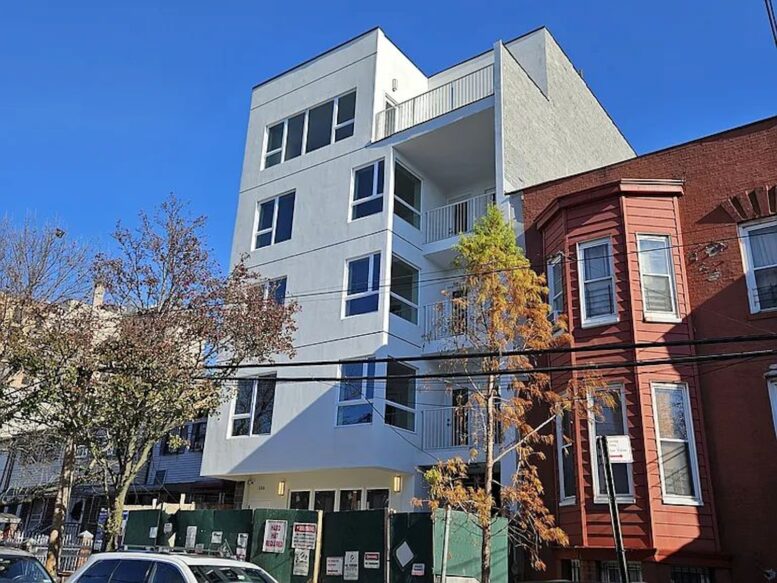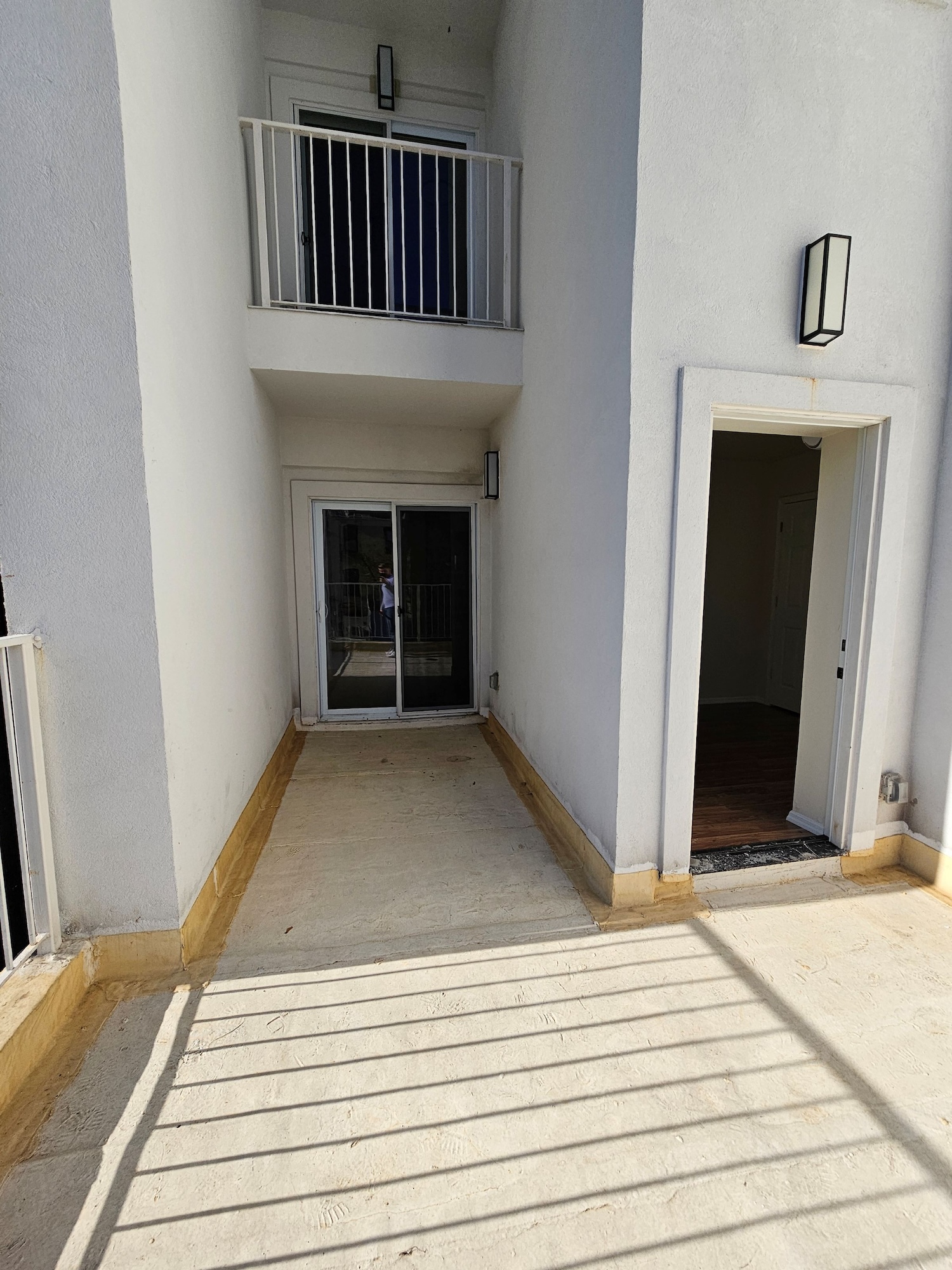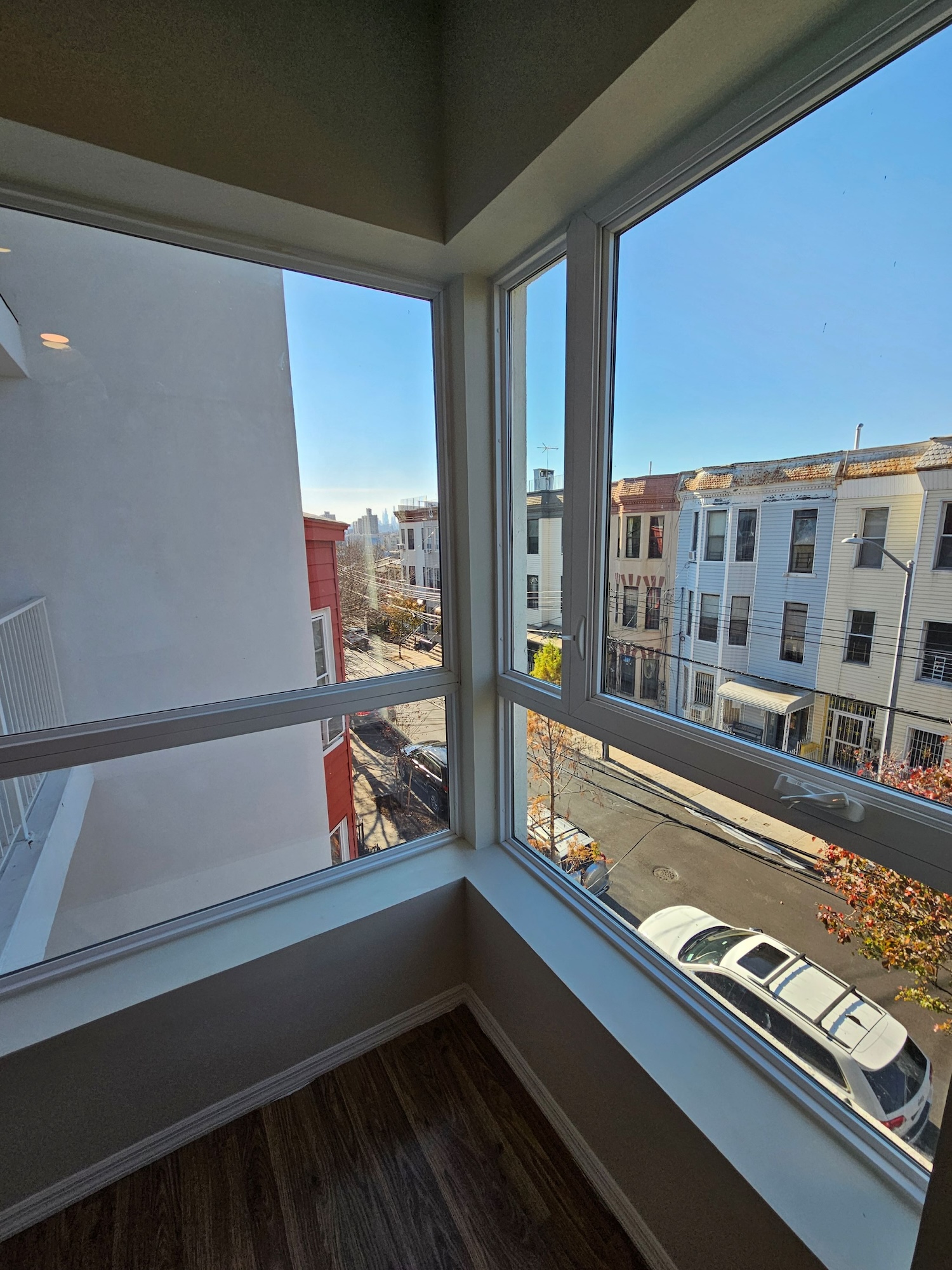Fulfilling 2024 State of the City proposals, Council also passed legislation to better track transportation projects contributing to NYC Streets Plan
Council established a Flash Flood Preparedness Pilot Program
The New York City Council voted to establish a citywide strategy for ensuring the availability of more public bathrooms, with a goal of creating over 2,1000 in the next ten years – approximately double the existing number. Currently, public restrooms are notoriously scarce in New York City, with a ratio of one public restroom per 7,820 residents. New York City has approximately 1,100 public toilets for its 8.6 million residents. The lack of access to public restrooms and accompanied policing of public urination laws disproportionately affect vulnerable communities, including unhoused individuals, older adults, and people with medical conditions.
The Council also passed legislation to better track the status of transportation projects contributing to DOT’s Streets Plan, which has repeatedly failed to comply with its targets, and to establish a flash flood preparedness pilot program to better protect New Yorkers from dangers of extreme weather events. The Council also voted on two resolutions by Speaker Adams – one to condemn President Trump’s executive order targeting of DEI programs and policies at the federal level, and one to authorize the Speaker to take legal action to defend against violations of Sanctuary Laws and the Trump Administration’s attacks on the City of New York.
“Access to public bathrooms is essential to New Yorkers’ health, safety and quality of life,” said Speaker Adrienne Adams. “This Council is proud to address the longstanding issue of the city’s lack of public bathrooms. Today’s action to promote more transparency on compliance and progress towards Streets Master Plan goals is critical step forward for greater accountability. First introduced in my 2024 State of the City Address, these reforms will help government officials and stakeholders understand the status on bus and bike line construction, as well as other street infrastructure. This Council will continue to prioritize safety and accessibility for all New Yorkers.”
Establishing a Plan for More Public Bathrooms
Introduction 694-A, sponsored by Council Member Sandy Nurse, would create a strategic planning process for establishing and maintaining a citywide public bathroom network. This would be led by a Deputy Mayor in collaboration with the Department of City Planning (DCP), the Department of Parks and Recreation (DPR), the Department of Transportation (DOT), and any other agency with relevant experience and expertise. The agencies would be required to produce a strategic planning report, to be updated every four years, with the goal of providing at least 2,120 public bathrooms by the year 2035, at least half of which would be publicly owned.
“New Yorkers: Relief is on the way! Whether you’re out with friends and family, a reporter on the beat, someone who’s menstruating, a caregiver, a delivery worker, or are homeless, we have all needed a public bathroom,” said Council Member Sandy Nurse. “The Bathroom Bill is about planning for basic human needs and making it easier to live and work here. Our failure to build more public restrooms has resulted in humiliation, racial and class inequities, thousands of criminal and civil tickets every year, and public space that is not welcoming to the public. We are changing that today by adding over 1000 public bathrooms to the citywide network. We will not only increase the number of public bathrooms but require the city to plan for their long-term care and maintenance. This bill will make New York City more livable, more welcoming, and a more just place.”
Increasing Transparency for Streets Plan Projects
The Streets Master Plan is the Department of Transportation (DOT) legally required plan for the development of city bus lanes, bike lanes, and other street infrastructure, with the goal of improving the City’s transportation network for pedestrians and other street users. However, DOT has fallen short of its goals year after year. The Council has regularly pressed the agency to provide mid-year updates on its progress, but DOT has been unwilling to do so because the Streets Master Plan currently only requires a single update in February of each year.
Creating a Flash Flood Preparedness Pilot
The frequency and intensity of flash flooding from heavy rainfall has increased in recent years, with risk of flooding exacerbated by the City’s concrete surfaces, lack of vegetation, and large areas of impermeable surface. These flash flooding events have resulted in deaths, damaged homes, trapped drivers, placed residents and first responders at risk, and disrupted subway service. Recent substantial flooding and its repercussions demonstrate the vulnerability of city infrastructure when faced with heavy rainfall – occurrences that are expected to only increase due to climate change.
Introduction 807-A, sponsored by Majority Whip Selvena N. Brooks-Powers, would require New York City Emergency Management (NYCEM) to disseminate emergency preparedness materials in locations that are prone to flash floods. Efforts would include outreach conducted in-person and via mass mailings, and target locations would be selected with consideration of their history of flash flood events and the prevalence of subgrade units and homes. Additionally, NYCEM would be required to develop guidance for facilitating safe evacuation of residents who live in vulnerable areas before flash flood emergencies.
“Residents in flood-prone areas like Southeast Queens are living with the very real consequences of climate change,” said Majority Whip Selvena N. Brooks-Powers. “As storms become more intense and flash flooding more common, we need targeted, proactive outreach and suitable shelter locations to help people stay safe. Introduction 807 requires New York City Emergency Management to provide clear, accessible evacuation guidance and preparedness information tailored to the needs of at-risk communities. This bill is about saving lives and making sure no one is left behind during the next major storm.”
Streamlining Tree Maintenance
Introduction 800-A, sponsored by Council Member Nantasha M. Williams, would require the Department of Parks and Recreation (DPR) to develop criteria by which they prioritize tree maintenance, taking into account the likelihood of potential harm to nearby or adjacent structures, whether a tree or limb that has already fallen is still capable of causing harm, and the proximity of a damaged tree or limb to nearby buildings. The Department would also be required to post a description of the criteria used to prioritize tree maintenance on its website.
“I’m proud to stand here today with my colleagues as we advance two pieces of legislation rooted in something simple but powerful: the public’s right to information,” said Council Member Nantasha M. Williams. “Int 800 requires the Department of Parks and Recreation to develop clear criteria for prioritizing tree maintenance. When government has information about how services work, who gets access, or where resources go, that information should be available to the people it serves. That’s how trust is built, and that’s how government becomes more responsive to the people it serves.”
Introduction 978-A, sponsored by Council Member Nantasha M. Williams, would require the 311 Customer Service Center, in coordination with the DPR, to provide 311 customers who submit tree pruning-related requests with certain information, including links to relevant maps and information about a program to train and certify volunteers in the pruning of trees.
“Int 978 is about making sure New Yorkers have direct access to online links to tree inspection maps and pruning schedules, as well as resources for those interested in volunteering to maintain our trees when they call 311,” said Council Member Nantasha Williams. “These bills are about more than trees. They are about making sure New Yorkers navigating concerns right outside their front doors, have the tools and transparency they need to get answers and action. And they’re part of this Council’s broader commitment to ensuring city government works better, communicates clearly, and protects both New Yorkers and the urban landscape that makes our neighborhoods healthier, greener, and stronger for generations to come.”
Waiving Civil Service Exam Fees for High School Students and First Time Applicants
Introduction 671-A, sponsored by Council Member Carmen De La Rosa, would authorize the Department of Citywide Administrative Services (DCAS) to waive the civil service examination fee for high school students in New York City and for individuals who are first time applicants.
“High attrition levels, PEGs, cuts, and an average 5% vacancy rate across the board already make it hard for the City’s municipal workforce to staff up enough to meet the service demands of our city — financial barriers to entry should not be a factor in our hiring process,” said Council Member Carmen De La Rosa. “Fees for exams can range from $40 to $101, not including the costs of study materials, transportation, and other underlying costs that come with applying to a job. Inaccessible fees should not deter high school students or new applicants seeking civil service careers, especially since multiple exams are required for 80% of City government positions. We are optimistic about Intro 671’s positive outcomes and a fairer application process for future civil servants, who are urgently needed in New York City.”
Authorizing the Speaker to Take Legal Action against Sanctuary Law Violations and Trump Administration Attacks
Resolution 836, sponsored by Speaker Adrienne Adams, would authorize the Speaker to take legal action to defend against the Adams Administration’s violation of Sanctuary Laws and the Trump Administration’s attacks on the City of New York.
On Tuesday, First Deputy Mayor Randy Mastro’s issued Executive Order 50 to re-establish the ability for ICE agents to operate on Rikers Island for criminal enforcement. Local Law 58 of 2014, however, has clear guidelines that prohibit the use of office space on Rikers for the enforcement of civil immigration enforcement. The executive order was announced on the same day that top I.R.S. officials resigned after the agency took steps to share protected tax records for deportation efforts in a departure from decades of practice. The potential of the executive order was first announced in February following Mayor Adams’ meeting with border czar Tom Homan and after Department of Justice officials interfered in his criminal case, of which Judge Dale Ho later wrote in a ruling that Mayor Adams attempted to gain dismissal of his indictment “in exchange for immigration policy concessions.” The Trump administration has also taken several actions that threaten funding for New York City and New Yorkers’ civil rights.
Expressing Support for Diversity, Equity, and Inclusion (DEI) Programs and Policies
Resolution 729, sponsored by Speaker Adrienne Adams, condemns President Trump’s executive order targeting of DEI programs and policies at the federal level, and expresses support for such programs at the city and state level.
In the Trump Administration’s crusade to dismantle Diversity, Equity, and Inclusion (DEI) programs and policies in the federal government and beyond, they have frozen federal funding, cut the federal workforce, and threatened funding for institutions, states and localities nationwide.
“Diversity is the key to our city’s culture and strength,” said Speaker Adrienne Adams. “The Council condemns Trump’s dismantling of DEI programs and his systemic use of this to attack working families across the nation and we will continue to firmly support these programs at the city and state level.”
Calling for an Environmental Impact Statement for Gun Hill Road Electric Bus Depot Charging Facility
Resolution 187, sponsored by Council Member Kevin C. Riley, would call on the Metropolitan Transportation Authority (MTA) to conduct a comprehensive Environmental Impact Statement for the proposed Gun Hill Road Electric Bus Depot Charging Facility.
“Resolution 187 ensures that environmental justice and community health remain front and center as we advance toward a zero-emissions future,” said Council Member Kevin C. Riley. “The proposed Electric Bus Depot Charging Facility must be a benefit—not a burden—to the Bronx. A comprehensive Environmental Impact Statement is essential to guarantee transparency, accountability, and long-term sustainability for our neighborhoods. This resolution is about protecting our people while supporting progress.”
Calling for an Environmental Impact Study on the proposed QueensLink project.
Resolution 59-A, sponsored by Majority Whip Selvena N. Brooks-Powers, would call on the MTA to conduct a comprehensive Environmental Impact Study on the viability of the proposed QueensLink project.
“For decades, residents of Southeast Queens have lacked reliable transit options to connect them with the rest of the borough and the city,” said Majority Whip Selvena N. Brooks-Powers. “Resolution 59 calls on the MTA to conduct a full Environmental Impact Study on the QueensLink proposal, so we can finally assess the feasibility of transforming the dormant Rockaway Beach Branch into a vital transportation corridor. This initiative received a major boost earlier this year, when the U.S. Department of Transportation awarded a $400,000 federal grant to support a Community Equity Analysis of the project. This continued study of Queenslink is a meaningful step toward closing the transit equity gap in Queens, and I am proud to lead this effort.”
Supporting State Legislation to End the Subminimum Wage for Employees Based on Age or Disability
Resolution 333-A, sponsored by Public Advocate Jumaane Williams, calls on the New York State Legislature to pass, and the New York State Governor to sign, S.28A /A.1006, which would eliminate the subminimum wage for employees based on their disability or age.
“While the intent of the subminimum wage was to ensure job opportunities for people with disabilities, it does not account for the loopholes employers go through to pay employees as little as possible for their work,” said Public Advocate Jumaane Williams. “As someone who has Tourette’s Syndrome and ADHD, I know how important it is to be each other’s best allies for the disabled community in the city. We need to keep moving forward and the state must act now in order to ensure that all people have access to fair pay. I’d like to thank the Speaker and Council for their support of this resolution and commitment to disability justice.”
Finance:
Preconsidered Resolution, sponsored by Council Member Justin Brannan, establishing a new 40-year Article XI tax exemption for one lot in Council Member Rita Joseph’s district.
Preconsidered Resolution, sponsored by Council Member Justin Brannan, establishing a new 40-year Article XI tax exemption for one lot in Council Member Althea Stevens’ district.
Appointments:
Resolution 820, sponsored by Council Member Keith Powers, would approve the appointment by the Council of Lauren Stossel as a member of the New York City Board of Corrections.
Resolution 821, sponsored by Council Member Keith Powers, would designate Patricia Marthone for appointment by the Mayor as a Director of the New York City Health and Hospitals Corporation.
Appointment by Public Advocate Jumaane Williams of Leah S. Goodridge as a member of the New York City Planning Commission.
Preconsidered Resolution approving Marc Landis to the office of Commissioner of Elections of the Board of Elections.








